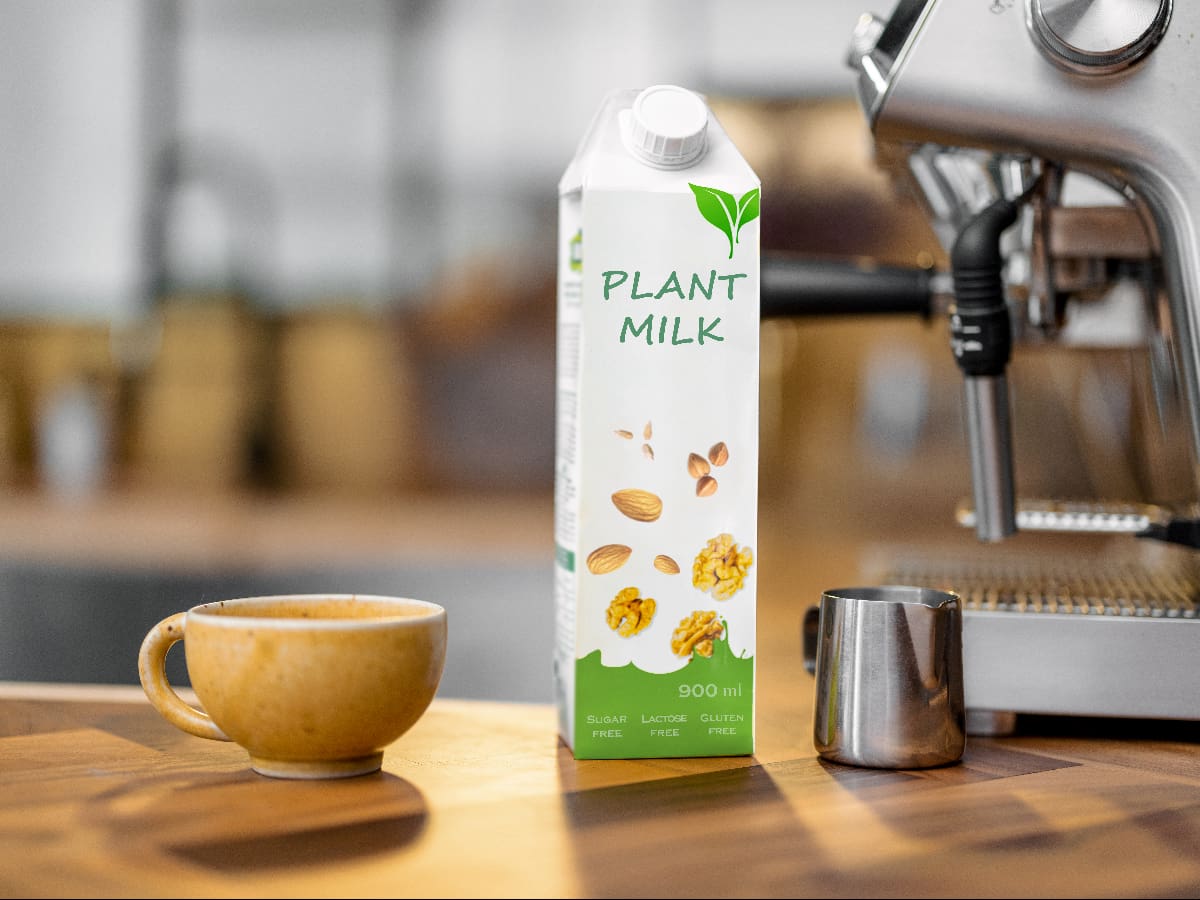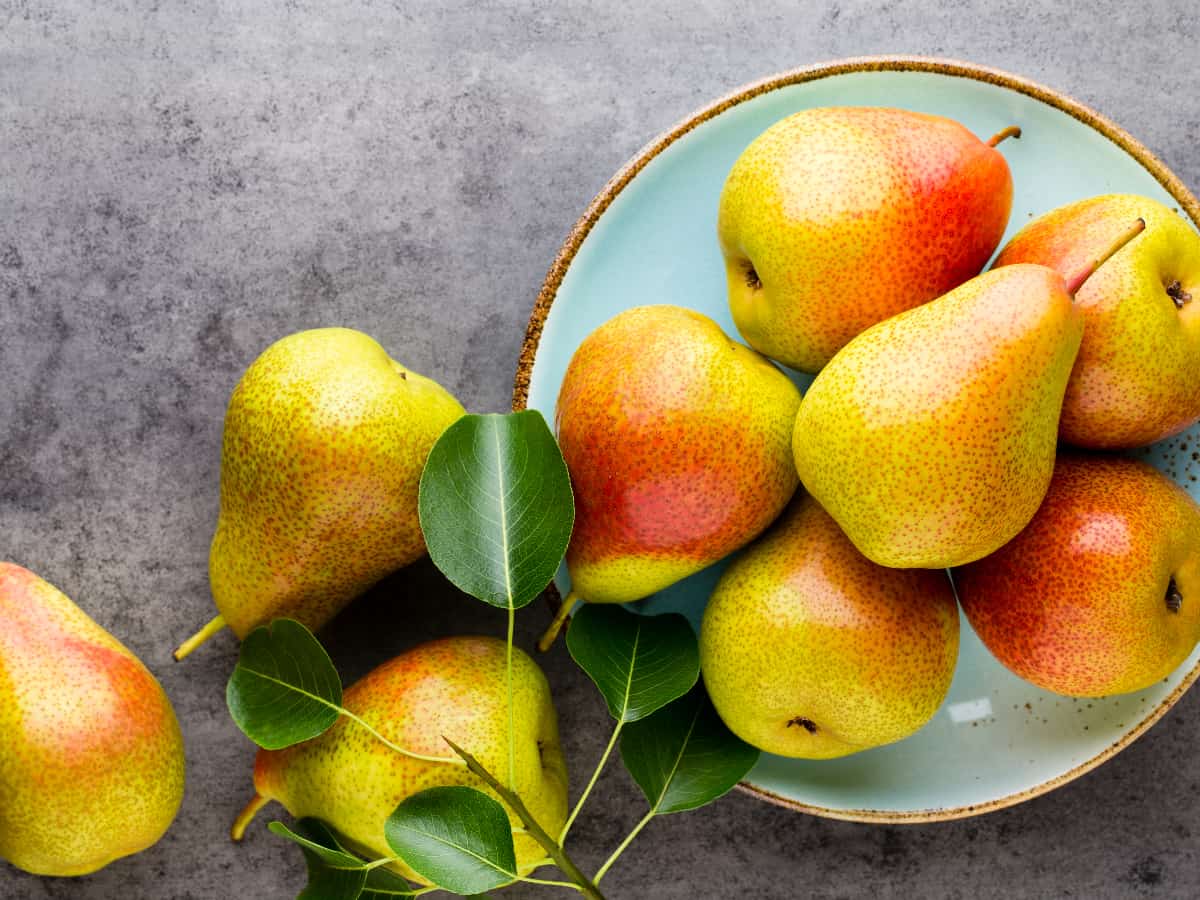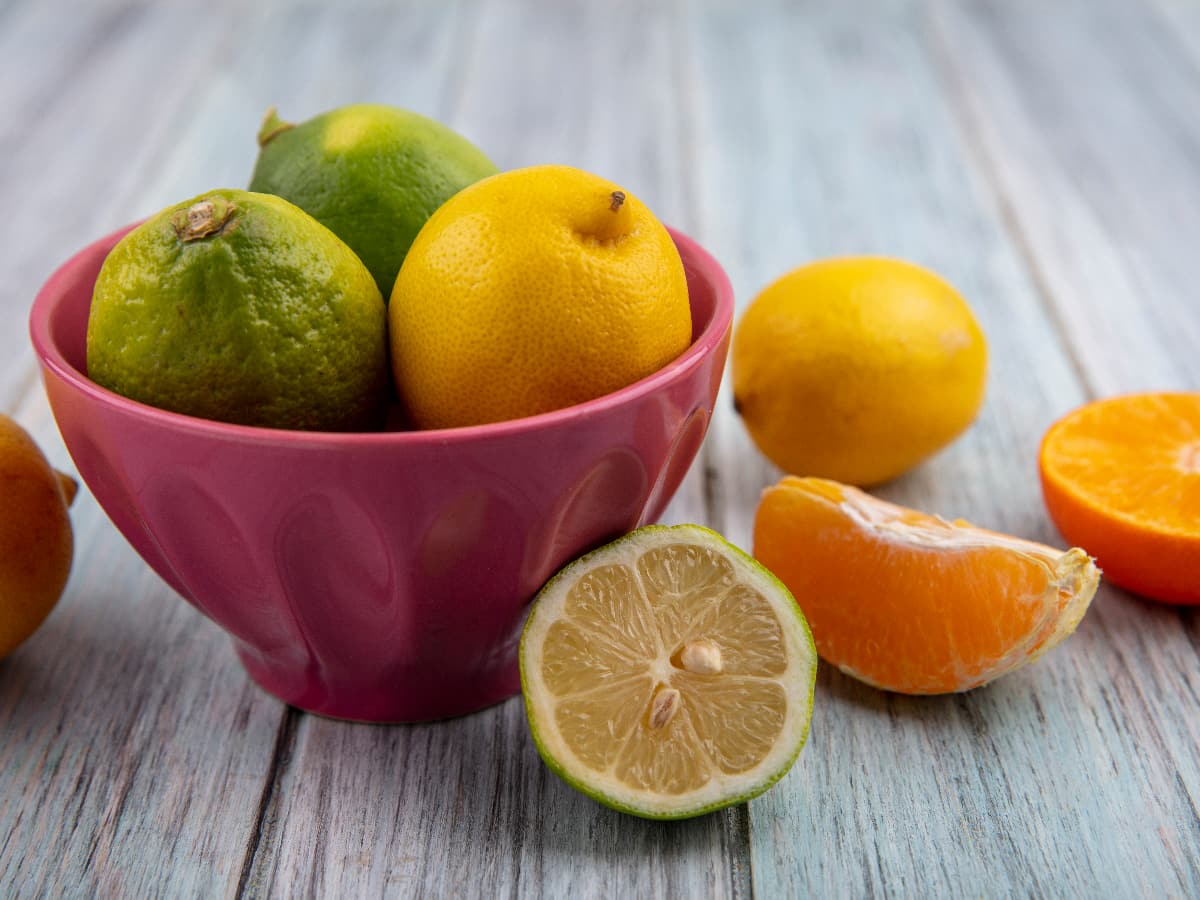Many people with diabetes or pre-diabetes know how it can be difficult to control their blood sugar levels. Many people go through years of trying out several foods, to see what works for them which can be distressing and cumbersome.
Making a few key changes to your diet helps improve blood sugar control and reduces the risk of diabetes and its related complications.
Some foods can cause massive spikes in glucose levels, while others help in lowering it. If you can determine what foods are good for you, it can help start a new approach to eating.
Choose foods with a low glycemic index (GI) score, a value below 55 or lower. These are the foods that will help you manage your blood glucose.
Based on scientific findings, here are the 20 foods to lower blood sugar:
1. Apples

An apple a day keeps the doctor away. And rightly so!
Apples are highly nutritious foods as it contains soluble fibers that stabilize blood sugar level. It also contains a host of other plant compounds like gallic acid, quercetin, and chlorogenic acid, all of which has the potential to reduce blood sugar levels.
Eating apples regularly may help reduce insulin resistance which is a condition where the cells do not respond to the insulin hormone. This in turn leads to impaired utilization of blood glucose, thereby increasing the sugar levels.
Apples have a low Glycemic Index (GI) of 39.
2. Nuts
Nuts are also one of the 20 foods to lower blood sugar. They are low in digestible carbs and are high in fibers.
Some nuts that are beneficial for diabetes are hazelnuts, macadamia nuts, almonds, cashew nuts, pistachio, walnuts, pecan, Brazil nuts, and walnuts. Apart from lowering blood sugar, they have an array of health benefits.
Nuts contain healthy fats that help reduce bad cholesterol like LDL and improve good cholesterol like HDL. Because diabetes and heart disease are often interlinked (diabetics are twice as likely to get one!), consuming nuts can serve dual benefits!
The Glycemic Index (GI) I of nuts ranges from 14 to 21.
3. Plant milk

 Another one of our 20 foods to lower blood sugar is milk, and no we are not talking about animal milk.
Another one of our 20 foods to lower blood sugar is milk, and no we are not talking about animal milk.
Milk obtained from dairy animals is rich in calcium, proteins, and vitamin D but it also contains lactose, a natural form of sugar. This can be utilized by the body, causing spikes in blood sugar levels. Many studies have also linked the consumption of milk with the risk of type 2 diabetes.
Plant-based milk, on the other hand, can help lower blood sugar levels. Some popular plant milk is the one obtained from soy, oat, almond, and rice.
However, if you still want to opt for dairy-based milk, always consider skim milk as it has lower sugar content.
4. Kimchi
An unconventional choice for the 20 foods to lower blood sugar, but research says it works!
Kimchi is a traditional Korean dish made with fermented vegetables like cabbage and radish. It boasts an array of health benefits including lowering insulin resistance.
Researchers found that the consumption of kimchi (either fresh or fermented) had beneficial effects on glucose metabolism when they were given to people with pre-diabetes. The fermented variety was shown to reduce insulin resistance and increase the sensitivity of the tissues to the action of the hormone.
5. Grapes
Many people assume that because grapes are sweet, they should be avoided if they have diabetes. But contrary to popular belief, it is on our list of 20 foods to lower blood sugar.
Like apples, grapes also contain quercetin, resveratrol, and other compounds that reduce blood sugar by affecting how the body secretes and uses insulin. Consumption of grapes has also been linked to a lowered risk of diabetes.
The GI of grapes ranges from 43 to 53 depending on the kind.
6. Lentil
Lentils are loaded with proteins and fiber which are digested slowly in the body. Frequent consumption of lentils helps balance blood sugar and protects against diabetes.
The Glycemic Index of lentils is 30.
7. Pears
 Many studies have indicated that the nutritional benefits of pears can help manage diabetes. That’s why we have included it in our list of 20 foods to lower blood sugar.
Many studies have indicated that the nutritional benefits of pears can help manage diabetes. That’s why we have included it in our list of 20 foods to lower blood sugar.
Studies have been conducted on thousands of people at risk of diabetes. Researchers found that foods rich in anthocyanin, including pears, reduce the disease risk.
Likewise, there is also evidence that eating fruits like pears and apples reduces the risk of developing type 2 diabetes by 18%.
A medium-sized pear has a Glycemic Index score of 30.
8. Berries
Berries are loaded with fibers, antioxidants, vitamins, and minerals. Their intake has been associated with improved blood sugar control.
Strawberries, blueberries, and blackberries enhance insulin sensitivity and improve the clearance of sugar from the blood.
Similarly, eating 250 grams of raspberries along with a meal high in carbohydrates was found to significantly reduce the levels of blood sugar post-meal. The results were found in a study done on adults with prediabetes, and compared with those who didn’t have the disease.
Berries have the lowest Glycemic Index score (25) of all the fruits, which is why they are one on our list of 20 foods to lower blood sugar.
9. Hummus
Hummus is one of the best diabetic snacks around and rightfully has its place in this list of 20 foods to lower blood sugar.
Made from chickpeas, hummus is rich in proteins, fibers, resistant starch, and antinutrients. It is therefore slowly digested and absorbed which causes a slower and balanced rise and fall of blood sugar levels.
The American Diabetes Association (ADA) recommends a 1/3 cup serving per day, preferably with vegetables as a filling and low-carb snack for diabetics.
The Glycemic Index of Hummus is 6.
10. Cinnamon
You may be surprised to find cinnamon in the list of 20 foods to lower blood sugar, but the spice has been known to have an anti-diabetic effect.
Cinnamon may imitate the effects of insulin thereby helping glucose enter the cells. It also increases insulin sensitivity, with the effects lasting for several hours. The spice has also been found to reduce blood sugar levels when in a fasting state.
11. Oils: Olive and coconut
 Next on our list of 20 foods to lower blood sugar are Olive oil and coconut oil.
Next on our list of 20 foods to lower blood sugar are Olive oil and coconut oil.
Studies have suggested that diets rich in olive oil significantly reduced fasting blood sugar and glycated hemoglobin (HbA1c), the amount of sugar attached to your hemoglobin.
It has also been shown to reduce LDL and triglycerides, two bad cholesterols that cause a series of heart diseases in diabetics. According to the ADA, it may also improve insulin sensitivity.
Likewise, coconut oil can support healthy blood sugar levels by increasing the body’s ability to utilize insulin.
12. Seeds: Flax and Chia Seeds
Flaxseeds are rich in fiber, protein, and good fats like omega-3 fatty acids. They are also loaded with magnesium, a mineral that helps cells use insulin
Studies have found that eating whole flax seeds causes significant improvements in blood glucose control. Reductions in HbA1c have also been associated with the use of flaxseeds.
Another function food on this list of 20 foods to lower blood sugar is Chia seeds. Studies have concluded that chia seeds may help improve blood sugar control as well as insulin sensitivity.
You can sprinkle these seeds into your morning cereal or top them over a cup of yogurt.
This brings us to our next food to beat diabetes!
13. Yogurt
Yogurt consumption has been associated with lowered insulin resistance and blood sugar levels. It contains probiotics, which may boost the ability of the body to metabolize foods that contain sugars. Yogurt is also rich in proteins that help keep a tab on blood glucose.
A variety of yogurt are available, many of which contain artificial sweeteners. Make sure to check labels and look for the ones without added sugars.
Greek yogurt and those that contain active and live cultures are beneficial. These are the yogurts we recommend as one of the 20 foods to lower blood sugar.
14. Citrus fruits
 Citrus fruits not only slow the uptake of glucose by the cells but also inhibits the movement or transport of sugar through the intestines and liver. That's why there are one of 20 foods to lower blood sugar.
Citrus fruits not only slow the uptake of glucose by the cells but also inhibits the movement or transport of sugar through the intestines and liver. That's why there are one of 20 foods to lower blood sugar.
Oranges, grapefruits, and lemons are some of the citrus fruits recommended by the ADA. They are packed with vitamin C, fiber, potassium, and folate.
Make sure you eat the fruits raw and whole. Drinking the juice will cut down the healthy fibers and your sugar levels can skyrocket.
15. Non Starchy vegetable
Non Starchy vegetables are next on our list of 20 foods to lower blood sugar.
Broccoli sprouts are rich in glucoraphanin which has been shown to reduce blood sugar levels and promote insulin sensitivity. They are also found to lower triglyceride levels and also reduce inflammation in people with diabetes.
Few studies have shown that broccoli extracts containing sulforaphane have powerful anti-diabetic effects. It helps enhance insulin sensitivity and reduce blood sugar and markers of oxidative stress.
Okra is a rich source of blood-sugar-lowering compounds like flavonoid antioxidants and polysaccharides.
Green beans are low in GI and also an excellent source of fiber, vitamin C, and minerals.
Other non-starchy vegetables that are helpful are:
- Asparagus
- Cauliflower
- Celery
- Tomatoes
- Cucumbers
- Hearts of Palm
- Cabbage
- Squashes
- Olives
- Artichokes
- Onions
- Zucchini
- Mushrooms
16. Avocado
 Avocados are also one of the 20 foods to lower blood sugar levels. It slows down the digestive process and helps prevent the sugar spike from occurring after a meal. This rich and creamy superfood is packed with monounsaturated fats that may help improve insulin resistance.
Avocados are also one of the 20 foods to lower blood sugar levels. It slows down the digestive process and helps prevent the sugar spike from occurring after a meal. This rich and creamy superfood is packed with monounsaturated fats that may help improve insulin resistance.
Research has found that avocados may help reduce blood sugar levels. It may also offer protection against the development of metabolic syndrome, conditions that increase chronic disease risk (including high blood sugar and pressure).
17. Seafood
Fish are a good source of healthy fats, antioxidants, protein, vitamins, and minerals, that can help regulate blood sugar levels. A high intake of fatty fish like sardines and salmon has been shown to help.
For instance, consuming 750 grams of fatty fish each week showed significant improvements in blood sugar levels after a meal, compared with those who consumed lean fish.
Fish do not have GI scores because they do not contain carbohydrates making them worthy of a spot on this list of 20 foods to lower blood sugar.
18. Pumpkin
Pumpkin has been used in traditional medicine as a natural remedy for diabetes in some Middle Eastern and Mexican countries.
It is packed with antioxidants and fiber and is high in polysaccharides which are known to have blood sugar-regulating potential. Even the seeds of pumpkin are rich in proteins and healthy fats, which can aid glucose control.
Needless to say, that is why it finds its place in this list of 20 foods to lower blood sugar.
19. Turmeric
Curcumin, the active compound of the turmeric spice is well known for its antioxidant and anti-inflammatory properties.
Not only does curcumin decrease the level of glucose in the blood, but it also reduces the risk of other diabetes-related complications and can play a role in the prevention too.
20. Leafy greens
 The last one on our list of 20 foods to lower blood sugar is leafy green vegetables like kale, green mustard, and spinach.
The last one on our list of 20 foods to lower blood sugar is leafy green vegetables like kale, green mustard, and spinach.
Kale is packed with compounds that may help decrease blood sugar levels, including fiber and flavonoid antioxidants.
The dark-green leaves of mustard carry plenty of dietary fibers, vitamins, minerals, and phytonutrients that help lower blood sugar. Spinach has a Glycemic Index of 0.
Leafy greens also contain antioxidants that can help protect the eyes from complications of persistently elevated blood sugar.
The bottom line
People who are at risk of diabetes or living with it can have a hard time trying to look for foods that don’t send their sugar levels into a frenzy.
Our curated list of 20 foods to lower blood sugar will help you pick foods with low to medium glycemic index that will not only help people with diabetes but also those who want to eat healthily.
However, you should also keep in mind that even though these foods are healthy, moderation is the key. And making it a lifestyle change rather than just dieting will promote overall health with the added benefit of optimizing the blood sugar.
Watch AFIL test kits testimonial videos click here
References
- Boyer, Jeanelle, and Rui Hai Liu. “Apple phytochemicals and their health benefits.” Nutrition journal vol. 3 5. 12 May. 2004.
- Hanhineva, Kati et al. “Impact of dietary polyphenols on carbohydrate metabolism.” International journal of molecular sciences vol. 11,4 1365-402. 31 Mar. 2010
- An, So-Yeon et al. “Beneficial effects of fresh and fermented kimchi in prediabetic individuals.” Annals of nutrition & metabolism vol. 63,1-2 (2013): 111-9.
- Wedick, Nicole M et al. “Dietary flavonoid intakes and risk of type 2 diabetes in US men and women.” The American journal of clinical nutrition vol. 95,4 (2012): 925-33.
- Guo, Xiao-Fei et al. “Apple and pear consumption and type 2 diabetes mellitus risk: a meta-analysis of prospective cohort studies.” Food & function vol. 8,3 (2017): 927-934.
- Miller, Katharina et al. “Bioactive Compounds of Strawberry and Blueberry and Their Potential Health Effects Based on Human Intervention Studies: A Brief Overview.” Nutrients vol. 11,7 1510. 2 Jul. 2019.
- Xiao, Di et al. “Attenuation of Postmeal Metabolic Indices with Red Raspberries in Individuals at Risk for Diabetes: A Randomized Controlled Trial.” Obesity (Silver Spring, Md.) vol. 27,4 (2019): 542-550.
- Allen, Robert W et al. “Cinnamon use in type 2 diabetes: an updated systematic review and meta-analysis.” Annals of family medicine vol. 11,5 (2013): 452-9.
- Enes, Bárbara N et al. “Chia seed (Salvia hispanica L.) effects and their molecular mechanisms on unbalanced diet experimental studies: A systematic review.” Journal of food science vol. 85,2 (2020): 226-239.
- Helland, Anita et al. “High intake of fatty fish, but not of lean fish, improved postprandial glucose regulation and increased the n-3 PUFA content in the leucocyte membrane in healthy overweight adults: a randomised trial.” The British journal of nutrition vol. 117,10 (2017): 1368-1378. doi:10.1017/S0007114517001234


.png?v=1737390083)
.png?v=1737187409)


